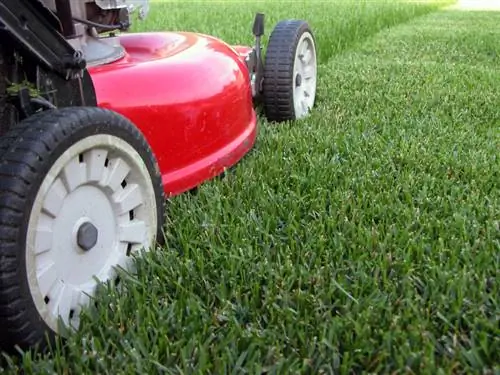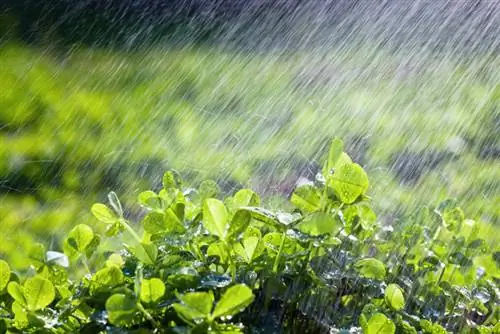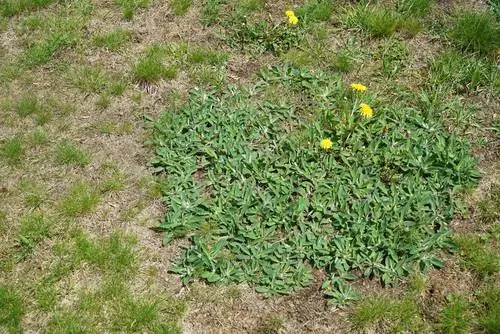- Author admin [email protected].
- Public 2023-12-16 16:46.
- Last modified 2025-01-23 11:20.
The various types of clover are often grown in Central Europe as fodder plants for cattle and other grazing animals. On certain soils, clover can also replace the lawn and serve as an additional bee pasture in the garden.

How do you sow clover correctly?
To sow clover successfully, you should mix fine-crumb sowing soil with clover seeds, dig and level the growing area, distribute the soil-seed mixture evenly and cover it with a thin layer of soil. Then water well and keep moist until germination.
The required site conditions for growing white or red clover
If you want to specifically plant white or red clover in your garden, you should first be clear about the necessary site conditions. As a rule, all clover varieties of the Trifolium genus need a relatively large amount of water, so that very dry soils (for example on dry slopes) must be additionally irrigated when growing clover. Sandy and peaty soils are unsuitable for growing clover because the latter, for example, has a soil environment that is far too acidic. Clover is less demanding when it comes to sunlight, but the planned cultivation area should not be entirely shady. While lawns suffer from nitrogen-poor soil, clover also grows well in nitrogen-poor soil. This is because the clover itself contributes to enriching the soil with nitrogen via so-called nodule bacteria.
Proceed correctly when sowing clover
The fine clover seeds are relatively difficult to sow by hand. It is therefore better to have the following things ready for sowing:
- Clover seeds
- fine, crumbly seed soil
- a wheelbarrow
- Watering water
Mix the clover seeds with the soil in the wheelbarrow, mix thoroughly several times with a shovel. Dig the planned cultivation area carefully and level the area well. Then use a shovel to spread the mixture of seeds and soil evenly. Then cover this with another layer of soil, which should not be thicker than around 5 millimeters. Water the growing area well and keep the location evenly moist until germination.
Pay attention to the germination of the seeds
Clover seeds only have a relatively short period of germination. This is why it can sometimes happen that seeds purchased commercially have a poor germination rate. It is therefore advisable to carry out a so-called germination test on a small area or in the pot before actually sowing, this way you can save yourself unnecessary work in the event of seeds that are too old.
Tip
Since clover is one of the comparatively short-lived plants, it does not automatically continue to grow as a bedding plant and lawn replacement. Especially when clover is kept short, self-sowing does not occur due to mowing and the resulting lack of flowering. That's why you have to reseed regularly to continually rejuvenate the crop.






